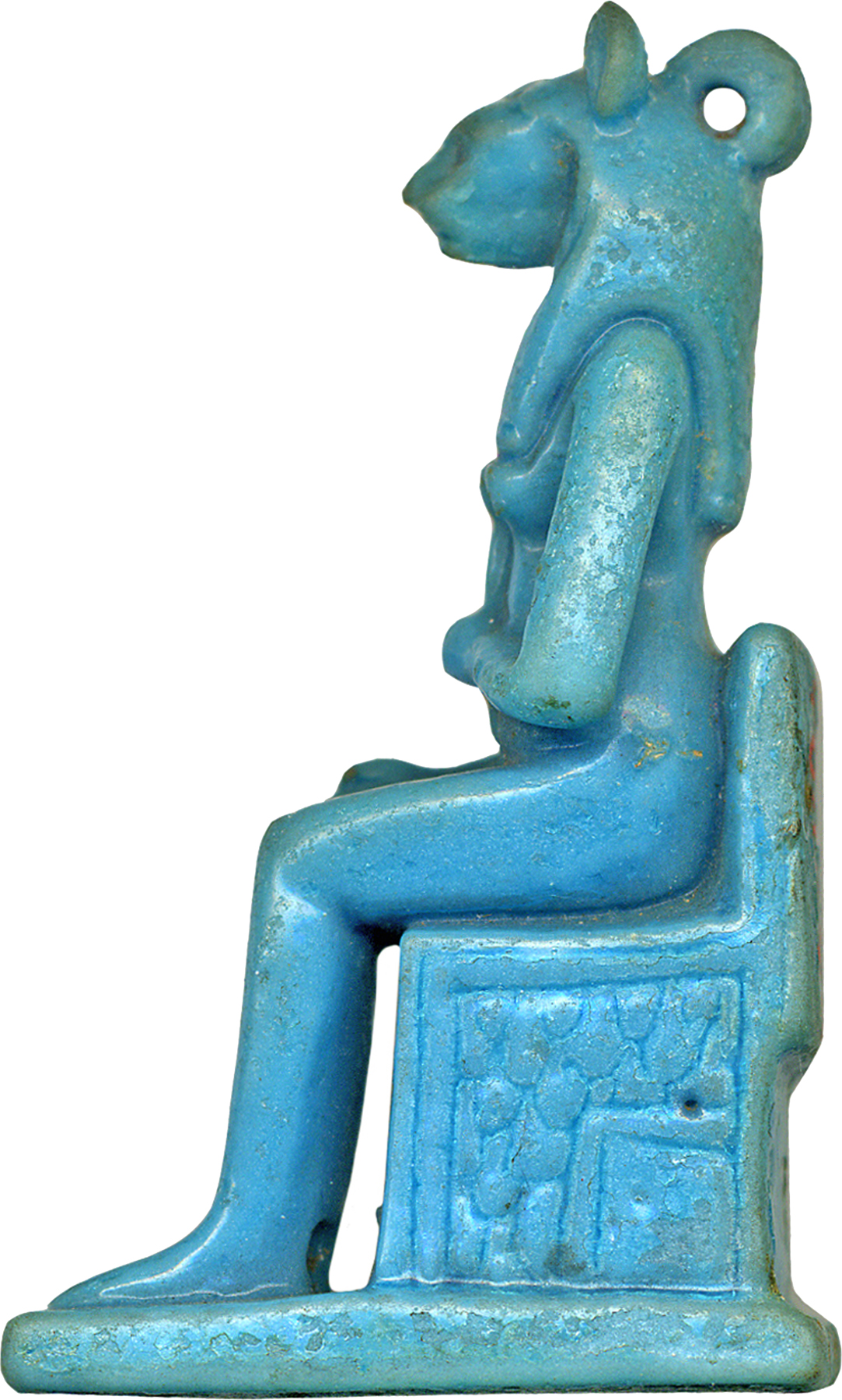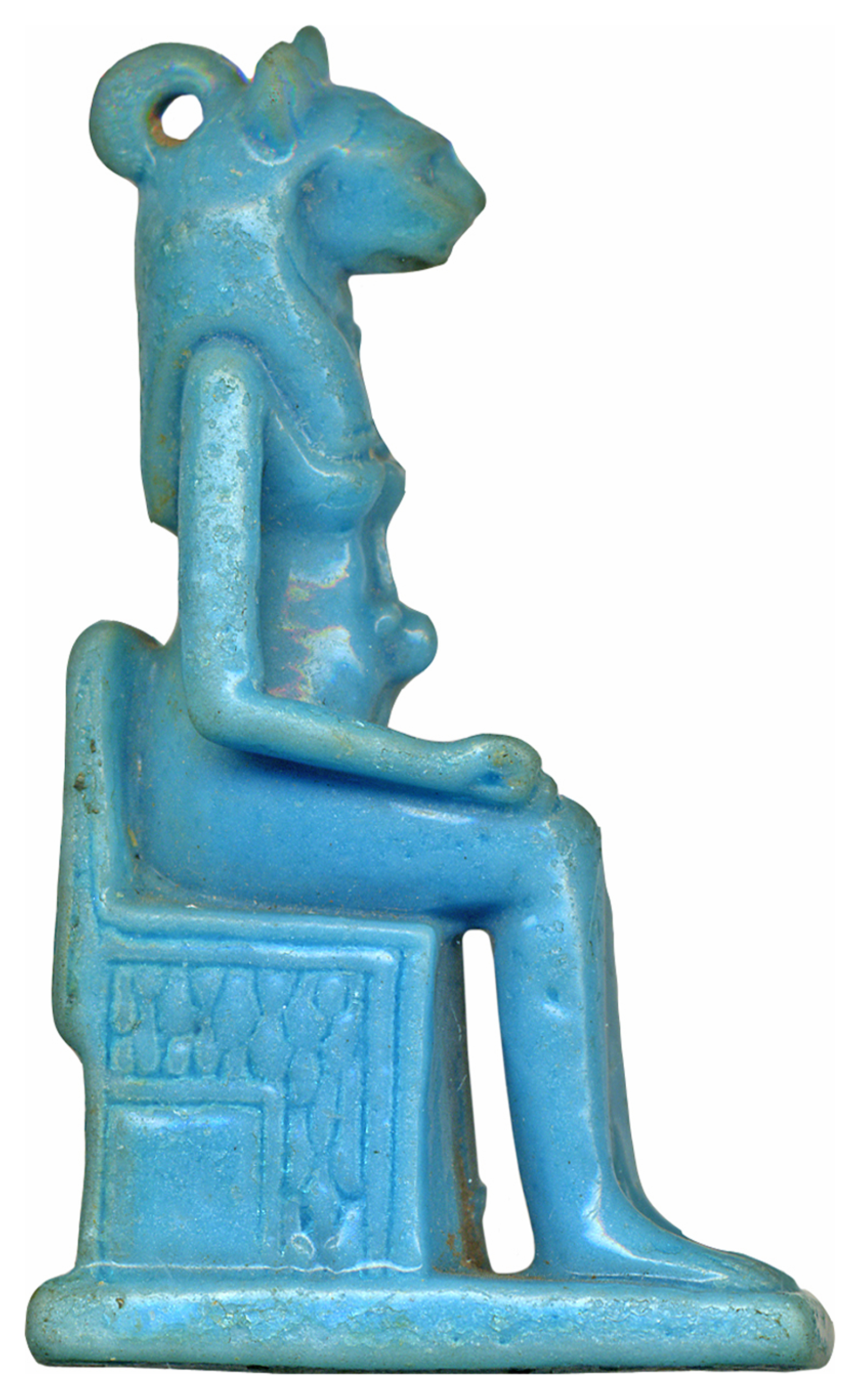Lioness-Headed Goddess
(Ancient Egypt and Nubia )
The lustrous blue glaze on this example of Egyptian faience (a silica-based ceramic that does not include clay but is more like glass) imitated the tones of turquoise, which was imported from the Sinai Peninsula. Egyptian faience was inexpensive to produce, but the results were so beautiful that it was used for even very prestigious objects.
The lioness-headed goddess probably Wadjet, is seated on a throne, her left hand holding a papyrus-scepter in front of her body. A loop, which clarifies the function of the small statuette as a pendant, is behind her back.
Provenance
Provenance (from the French provenir, 'to come from/forth') is the chronology of the ownership, custody, or location of a historical object. Learn more about provenance at the Walters.
Henry Walters, Baltimore, 1930 [mode of acquisition unknown]; Walters Art Museum, 1931, by bequest.
Geographies
Egypt (Place of Origin)
Measurements
H: 2 1/16 x W: 9/16 x D: 1 1/4 in. (5.29 x 1.42 x 3.19 cm)
Credit Line
Acquired by Henry Walters, 1930
Location in Museum
Accession Number
In libraries, galleries, museums, and archives, an accession number is a unique identifier assigned to each object in the collection.
In libraries, galleries, museums, and archives, an accession number is a unique identifier assigned to each object in the collection.
48.1546








